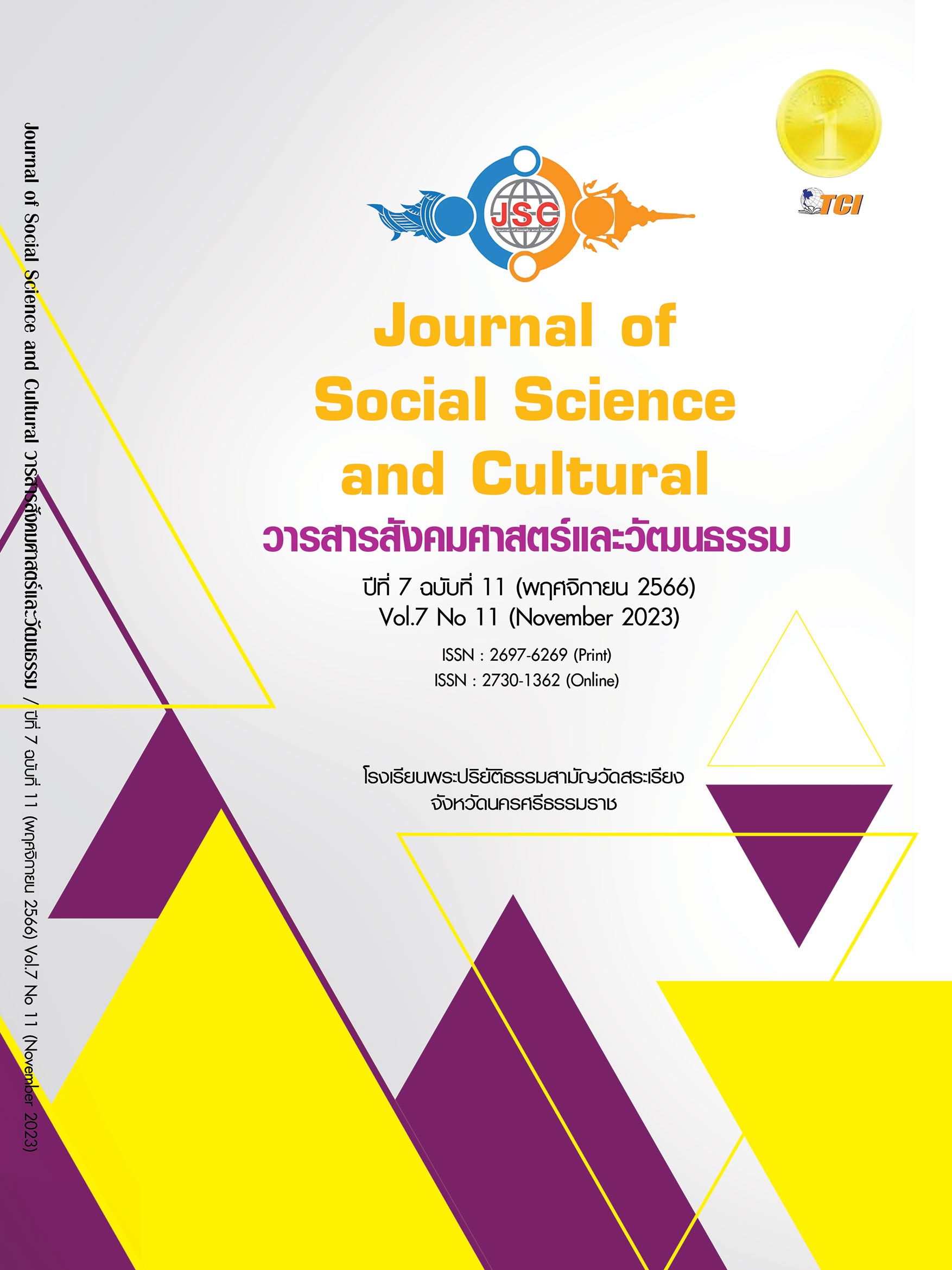GUIDELINE FOR DEVELOPMENT OF GERIATRIC PHYSICAL THERAPIST COMPETENCY
Main Article Content
Abstract
This research aims to 1) analyze the motivation and the development of physical therapists that affect the competency of geriatric physical therapists, and 2) propose guidelines for developing the competency of geriatric physical therapists. The study is survey research using a qualitative data collection by 410 sets of questionnaires. Statistics used in data analysis are frequency, percentage, mean, standard deviation, multiple regression analysis and content analysis. The results of research showed that 1) Motivation was able to describe the core competencies with 44.0 percent and the specific functional competencies with 38.5 percent. When considering each aspect, it was found that success at work, nature of work, remuneration, interpersonal relationships, policy and administration, and professional recognition had a statistically significant level .01 effect on the performance of physical therapists. Development of physical therapists was able to describe the core competencies with 21.9 percent, and the specific functional competencies 12.5 percent. When considering each aspect, it was found that implementation, experiment and learning by experience, and receiving the information from supervisor or senior had a statistically significant level .01 effect on the performance of physical therapists, and 2) Guideline for developing the competency of geriatric physical therapists is to improve the existing curriculum by focusing on knowledge about the elderly. Develop competency through training and practice to emphasis on enhancement of knowledge and skills, consistent with patient needs. Establish measures to control the quality of treatment. Increase access to and creation for sustainability in physical therapy profession.
Article Details
References
กัลยา วานิชย์บัญชา. (2555). สถิติสำหรับงานวิจัย. กรุงเทพมหานคร: บริษัท ธรรมสาร จำกัด.
ชัยพัฒน์ พุฒซ้อน และกันตพัฒน์ พรศิริวัชรสิน. (2561). แนวทางการแก้ไขปัญหาสังคมผู้สูงอายุของประเทศไทย. วารสารเครือข่ายส่งเสริมการวิจัยทางมนุษยศาสตร์และสังคมศาสตร์, 1(1), 25-35.
ธีรวุฒิ เอกะกุล. (2543). ระเบียบวิธีวิจัยทางพฤติกรรมศาสตร์และสังคมศาสตร์. อุบลราชธานี: สถาบันราชภัฎอุบลราชธานี.
นพพล ศีลอาภรณ์ และยุวยงค์ จันทรวิจิตร. (2561). ความสัมพันธ์ระหว่างแรงจูงใจกับสมรรถนะการพยาบาลเฉพาะทางด้านการพยาบาลชุมชนของพยาบาลเวชปฏิบัติทั่วไปโรงพยาบาลส่งเสริมสุขภาพตำบล เขตบริการสุขภาพที่ 3. วารสารการพยาบาลและสุขภาพ, 12(1), 139-150.
บุญเรียง ขจรศิลป์. (2549). สถิติวิจัย. (พิมพ์ครั้งที่ 9). นนทบุรี: พีเอส.พริ้นท์.
สภากายภาพบำบัด. (2553). มาตรฐานบริการกายภาพบำบัด พ.ศ. 2553. ราชกิจจานุเบกษา. เล่ม 128 ตอน พิเศษ: หน้า 82-88.
สภากายภาพบำบัด. (2566). เรื่องรายชื่อผู้ได้รับหนังสืออนุมัติแสดงความรู้ความชำนาญในการประกอบวิชาชีพกายภาพบำบัดสาขาต่าง ๆ. เรียกใช้เมื่อ 19 พฤศจิกายน 2566 จาก https://pt.or.th/PTCouncil/file_attach/Att202303141678787909_6.pdf
สมภพ ห่วงทอง และสุทธิศักดิ์ สุริรักษ์. (2564). ปัจจัยจูงใจในการปฏิบัติงานของผู้ดูแลผู้สูงอายุที่มีภาวะพึ่งพิงอำเภอบ้านคา จังหวัดราชบุร. วารสารสภาการสาธารณสุขชุมชน, 3(1), 77-90.
สุธาสินี ปวงฟู และ ธนุช พุทธาวรางค์. (2561). การพัฒนาสมรรถนะเฉพาะทางของพยาบาลวิชาชีพในการดูแลผู้ป่วยระยะวิกฤตหลังได้รับการผ่าตัดผ่านกล้อง โรงพยาบาลราชวิถี. วารสารกรมการแพทย์, 43(3), 131-137.
อาภรณ์ ภู่วิทยพันธุ์. (2559). การพัฒนาขีดความสามารถของบุคคลบนพื้นฐาน 70:20:10 Learning Model (พิมพ์ครั้งที่ 1). กรุงเทพมหานคร: เอช อาร์ เซ็นเตอร์.
Cronbach, L. J. (1951). Coefficient Alpha and the Internal Structure of Tests. Psychometrika, 16(3), 297-334.
Deborah, K., et.al. (2009). Geriatric Physical Therapy Description of Specialty Practice. Retrieved March 20, 2022, from https://aptaapps.apta.org/specialistcertification/files/kit-geria.pdf
Economic and Social Commission for Asia and the Pacific: ESCAP. (2566). DEMOGRAPHIC CHANGES IN ASIA AND THE PACIFIC. Retrieved September 18, 2023, from https://www.population-trends-asiapacific.org/data/.
Ethington, D. L. H. (2017). Mandated Continuing Education and The Competency of Illinois Physical Therapists. Dissertations, Doctor of Philosophy Public Policy and Public Administration: Walden University.
Herzberg, F. et.al. (1959). The Motivation to Work. New York, NY: John Witey.
Humphrey, Albert. (2005). SWOT Analysis for Management Consulting. Retrieved October 20, 2022, from https://www.sri.com/sites/default/files/brochures/dec-05.pdf.
Maslow, A. H. (1954). Motivation and Personality. Harper & Brothers: New York.
Nadler, Leonard. (1990). Corporate Human Resource Development. 4th ed. New York: Van Nostrand Reinhold Company.
O'Connell, B. (2014). "The Evaluation of Doctor of Physical Therapy Students' Confidenceand Satisfaction Using Human Patient Simulation". The degree of Master of Science in Pharmacology and Toxicology: University of Rhode Island.
Rovinelli, R. J. & Hambleton, R. K. (1977). On the use of content specialists in the assessment of criterion-referenced test item validity. Tijdschrift voor Onderwijsresearch, 2(2), 49–60.
Weihrich, H. (1993). Daimler-Benz’s Move Towards the Next Century with The Tows Matrix. European Business Review, 93(1), 4-11.


